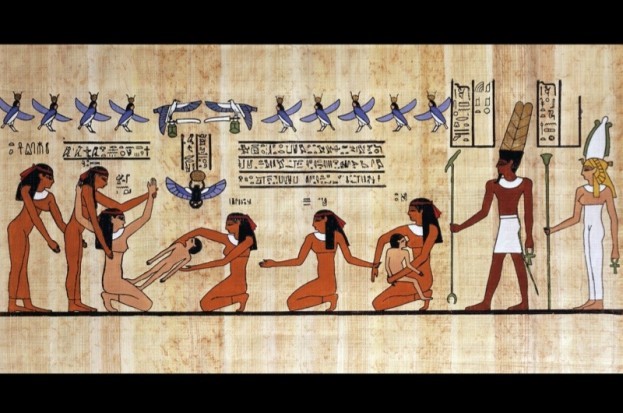Access Denied
IMPORTANT! If you’re a store owner, please make sure you have Customer accounts enabled in your Store Admin, as you have customer based locks set up with EasyLockdown app. Enable Customer Accounts
Ancient Egyptians Valued Miscarriage with Respect and Love
Elizabeth MacDonald

A small piece of history was recently discovered.  RECORD YOURBABY'S HEARTBEAT IN ANADORABLE STUFFED ANIMAL! The smallest ancient Egyptian coffin was found. In a culture that treasures life; they also treasured and respected death. This coffin was too tiny to hold an infant, smaller even than a newborn. This coffin was merely 44cm, large enough to embrace a fetus of just 16-18 weeks gestation.
RECORD YOURBABY'S HEARTBEAT IN ANADORABLE STUFFED ANIMAL! The smallest ancient Egyptian coffin was found. In a culture that treasures life; they also treasured and respected death. This coffin was too tiny to hold an infant, smaller even than a newborn. This coffin was merely 44cm, large enough to embrace a fetus of just 16-18 weeks gestation.
 Read the full article HERE
Read the full article HERE
 RECORD YOURBABY'S HEARTBEAT IN ANADORABLE STUFFED ANIMAL! The smallest ancient Egyptian coffin was found. In a culture that treasures life; they also treasured and respected death. This coffin was too tiny to hold an infant, smaller even than a newborn. This coffin was merely 44cm, large enough to embrace a fetus of just 16-18 weeks gestation.
RECORD YOURBABY'S HEARTBEAT IN ANADORABLE STUFFED ANIMAL! The smallest ancient Egyptian coffin was found. In a culture that treasures life; they also treasured and respected death. This coffin was too tiny to hold an infant, smaller even than a newborn. This coffin was merely 44cm, large enough to embrace a fetus of just 16-18 weeks gestation.
16-18 weeks gestation is the equivalent of 4 months pregnant.
1 in 3 women in our society lose babies. It is rarely discussed. But this finding should remind us just how important ALL babies are – even the ones who do not survive pregnancy. They have a reason and purpose.“A person’s a person, no matter how small.” – Dr. Seuss.
This tiny life, that lived for such a short time within his (or her) mother, was valued by the Egyptian culture. The fetus was treated with absolute care and precision as it was embalmed and went through burial rituals. The coffin was excavated in 1907 at Giza and kept at the Fitzwilliam Museum in Cambridge. Curators at the Fitzwilliam made the discovery during their research for the pioneering bicentennial exhibition ‘Death on the Nile: Uncovering the Afterlife of Ancient Egypt.’ It is believed that the burial took place during the ancient Egyptian ‘Late Period’ and may date to around 664-525 BC. The lid and box are both made from cedar wood, which have deteriorated greatly but still show the amazing details that were carefully carved. This small life was respected and loved. The care and details placed in the burial show nothing less than love. From the University of Cambridge:“The diminutive wrapped package inside was carefully bound in bandages, over which molten black resin had been poured before the coffin was closed. For many years it was thought that the contents were the mummified remains of internal organs that were routinely removed during the embalming of bodies. Examination using X-ray imaging at the Fitzwilliam Museum was inconclusive, but suggested that it may contain a small skeleton. It was therefore decided to micro CT (computed tomography) scan the tiny bundle at Cambridge University’s Department of Zoology. The cross-sectional images this produced gave the first pictures of the remains of a tiny human body held within the wrappings, which remain undisturbed. Dr Tom Turmezei, recently Honorary Consultant Radiologist at Addenbrooke’s Hospital in Cambridge collaborated with the Fitzwilliam Museum, alongside Dr. Owen Arthurs, Academic Consultant Paediatric Radiologist at Great Ormond Street Hospital, London. The ground-breaking results were based on their extensive knowledge of CT imaging and paediatric autopsy. Five digits on both hands and feet and the long bones of the legs and arms were all clearly visible. Although the soft skull and pelvis were found to be collapsed the categorical consensus was that inside the bundle was a human foetus estimated to be of no more than eighteen weeks gestation. It was impossible to give a gender to the specimen and it is thought that the foetus was probably the result of a miscarriage, as there were no obvious abnormalities to explain why it could not have been carried to full-term. From the micro CT scan it is noticeable that the foetus has its arms crossed over its chest. This, coupled with the intricacy of the tiny coffin and its decoration, are clear indications of the importance and time given to this burial in Egyptian society.”This discovery is the only academically verified specimen to exist at only sixteen to eighteen weeks of gestation. Tutankhamun’s tomb contained two small fetuses that had been mummified and placed in individual coffins, but these infants were 25 weeks and 37 weeks gestation. No other findings have ever shown the true value a society places on life – even the ones that end before a first breath is taken. The miniature coffin is currently on display as part of the exhibition Death on the Nile: Uncovering the Afterlife of ancient Egypt until 22nd May 2016 at the Fitzwilliam Museum Cambridge.
 Read the full article HERE
Read the full article HERE
Comments
Leave a comment
Your Email Address Will Not Be Published. Required Fields Are Marked *
Subscribe to our Newsletter
Subscribe to our newsletter and receive our articles & discounts.
Invalid password
Enter
Use left/right arrows to navigate the slideshow or swipe left/right if using a mobile device






